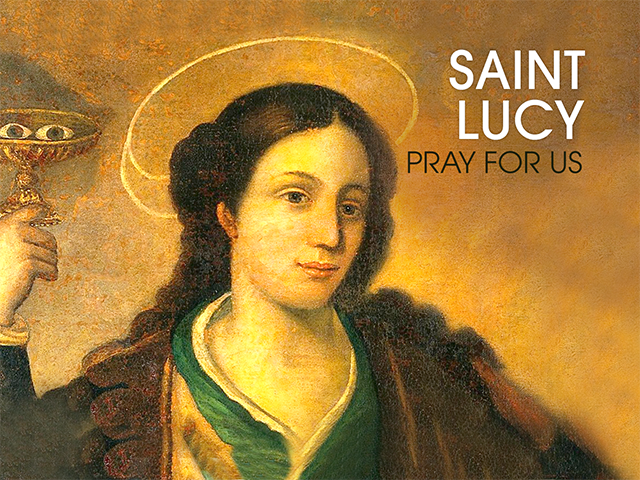



St. Lucy (Lucia) of Syracuse (283–304 A.D.) was born to a wealthy Christian family on the island of Sicily. Her father died when she was in her infancy. Lucy grew in piety, and at a young age secretly consecrated her virginity to Christ. Her mother pressured her into an arranged marriage with a pagan nobleman in order to provide for her daughter's future, which Lucy avoided. When Lucy's mother was struck with a long and serious illness, Lucy convinced her mother to accompany her to pray at the tomb of St. Agnes. As a result, Lucy's mother was miraculously cured of her malady. Lucy then told her mother about her vow of chastity, and her mother consented to her refusal to marry. Lucy gave herself to serving persecuted Christians hiding in the catacombs, wearing a wreath of candles on her head to illumine the dark underground caverns, with her arms full of provisions. The man to whom Lucy was betrothed, upon finding that Lucy was a Christian and had refused his hand in marriage, had her imprisoned under the persecutions of Diocletian. The judge sentenced Lucy to prostitution in a brothel, but God rendered her body immovable and the soldiers were unable to carry out the task. They then tried to set her on fire, but the wood underneath Lucy would not burn. Finally, she was killed by the sword. Among her tortures her eyes were gouged out, making St. Lucy the patron saint of eye problems and blind people, among others. St. Lucy is among the great virgin martyrs of the Church, her name appearing in the Roman Canon of the Mass. Her feast day is December 13th.